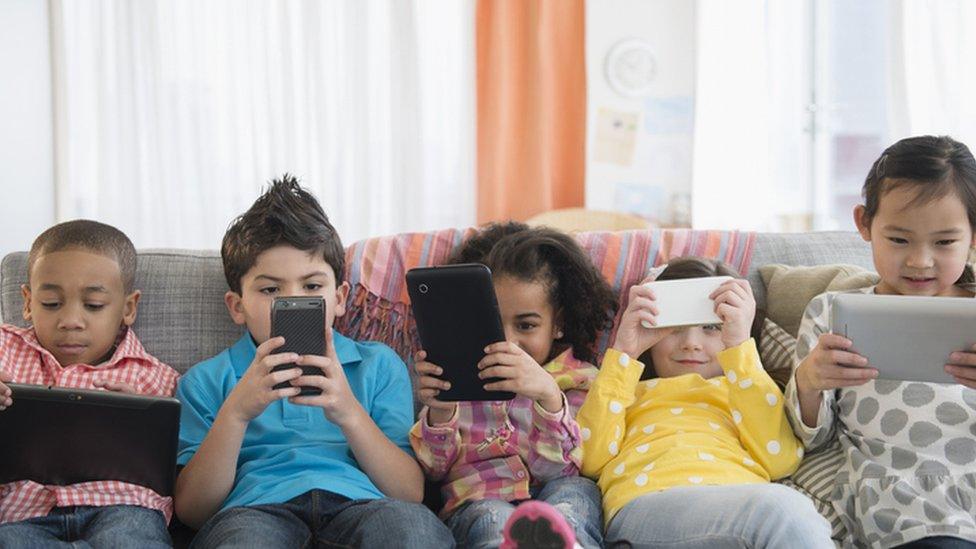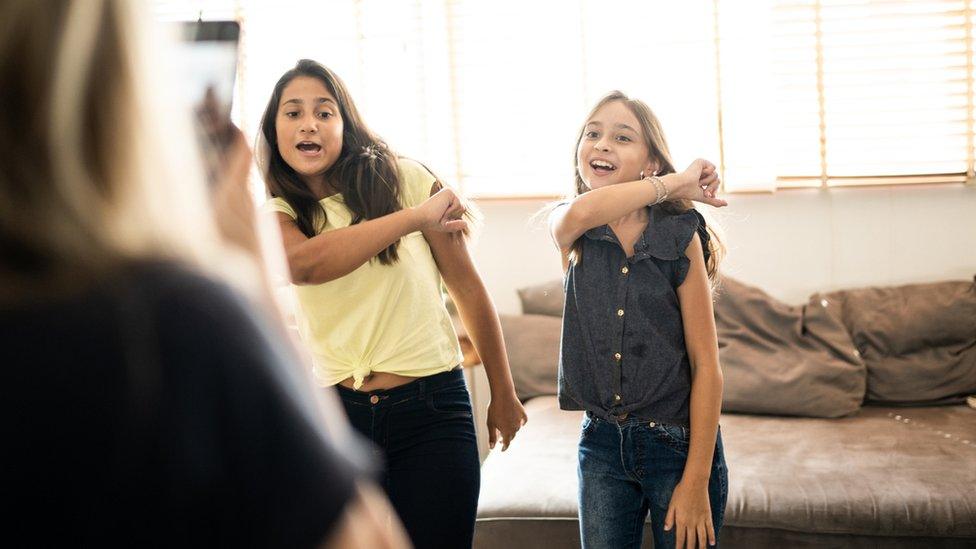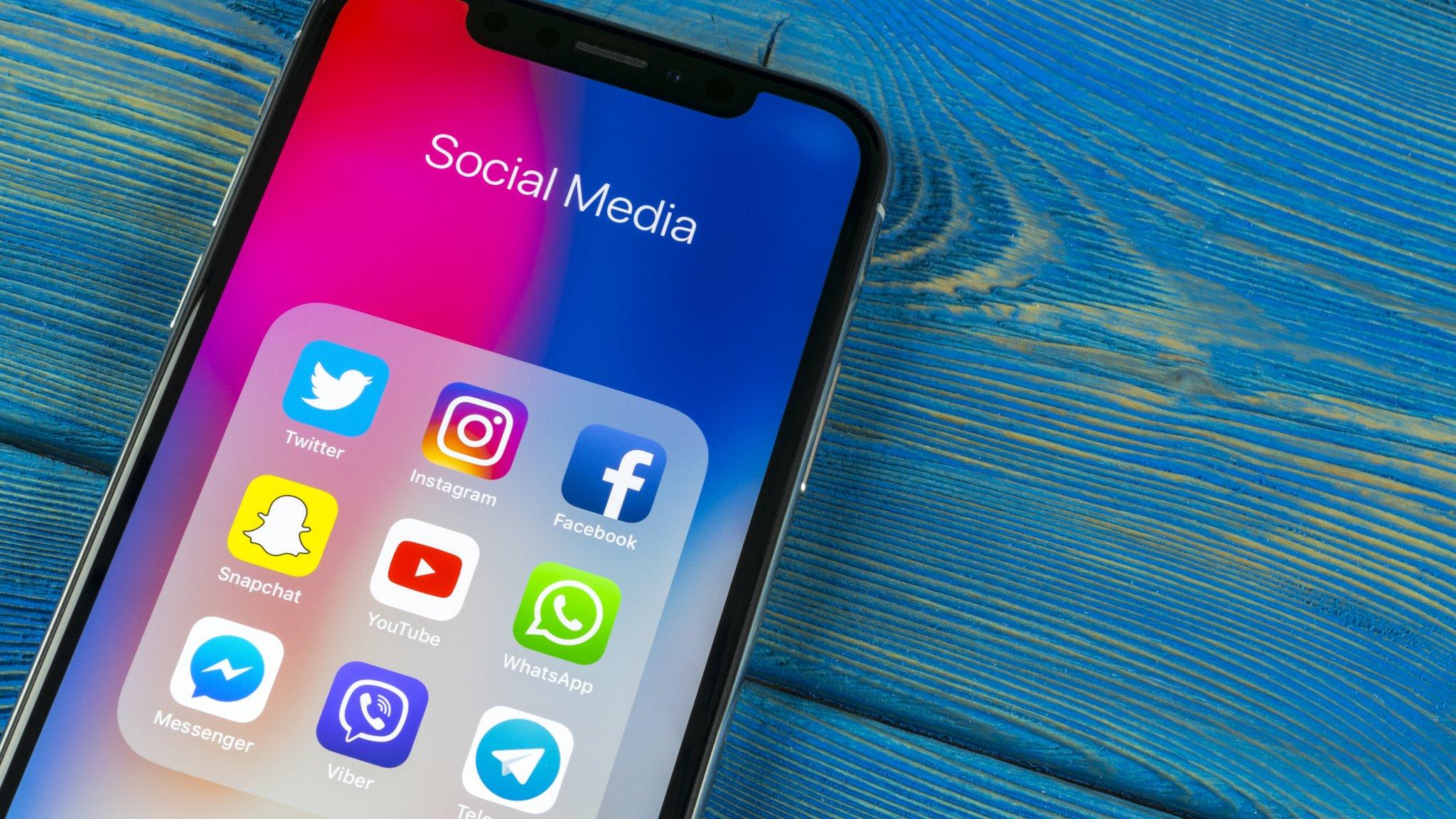Ofcom report: Most children 'multi-screen' when watching TV
- Published
- comments

When you watch TV do you have another screen on the go at the same time?
A new report from Ofcom (the Office of Communications) which oversees UK TV, radio and internet claims that most children use multiple screens at once.
The figures are part of the organisation's yearly study of online and media habits in the UK.
It also says that its results suggest many teenagers aren't great at spotting fake news online and that lots of under-13s have a social media profile - even though the minimum age requirement for most apps is above that age.
The report comes out each year and usually relies on information given about children by the adults responsible for them - and it also looks at which apps are popular and how they're being used.
Have your say in our vote about using more than one device at a time and let us know in the comments what you think of the report's findings.
If you can't see this vote, click here.
TikTok rises in popularity

Despite being under the minimum age requirement (13 for most social media sites), 33% of parents of 5-7s and twice as many 8-11s (60%) said their children have a social media profile.
While older children prefer Instagram, with 55% of 12-15 year olds likely to have a profile. The report shows how younger children aged 8-11 are more likely to have profiles on TikTok (34%) and YouTube (27%).
TikTok has grown in popularity even among younger kids, with 16% of 3-4 year-olds and 29% of 5-7s using the platform.
Multi screening

The report suggests the popularity of short-form content such as online videos could be linked to multi-screening, with more children reporting difficulties in focusing on a single online activity.
Children said they preferred to watch films, or other long-form content, while on multiple devices at the same time - for example using a tablet or phone while also watching TV.
Only 4% of children aged 3-17 say they never do anything else while watching TV.
Spotting fake news
Fiona Rutherford, BuzzFeed News reporter, on avoiding Fake News (February 2017)
The report also asked whether older children and adults were able to judge what is real and what is fake online.
To test this they were shown social media posts and profiles to see whether they could tell if there was any misinformation.
Although 74% of older children (12-17) were confident they could spot misinformation online, a practical test showed they didn't always have the skills to tell whether a post was genuine.
In practice, the older children found it easier to spot a fake social media profile.
Dame Melanie Dawes, Ofcom Chief Executive, called on social media companies to do more on misinformation and fake news.
She said: "Many adults and children are struggling to spot what might be fake. So we're calling on tech firms to prioritise rooting out harmful misinformation, before we take on our new role helping to tackle the problem."
WATCH: The BBC's Marianna Spring on how to spot misleading stories online about Ukraine crisis
Check the source. This isn't necessarily who shared the information with you, but where it originated from.
Question the source. Are they established and trustworthy, or might they have a reason to mislead?
Take a step back. Before you take something at face value, think about your own motives for wanting to believe it.
Is that post actually advertising?
Is that meme really an ad?
It's not always easy to tell what is an advert online and that was backed up by the study.
Most children aged 12-17 were confident that they could recognise advertising online, but less than four in 10 (37%) correctly recognised the links at the top of a search engine page as sponsored ads.
In 2019, social media stars agreed to change how they post online, to make it clear that that they have been paid or received any gifts or loans for products they use for advertising purposes.
Seven in 10 children aged 12-17 were able to correctly identify that an influencer was promoting a product because of a paid partnership.
- Published7 May 2019

- Published5 April 2023

- Published22 February 2022

